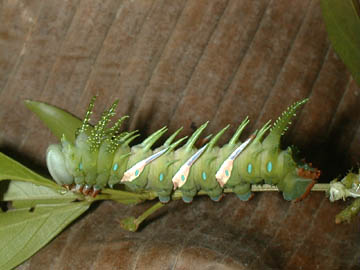|
|
Classroom Experiments |
|
|
Caterpillar
Experiment Alfalfa and Saponin Caterpillar
Experiment Nicotine |
Dyer, Saponin Shake Test
Background: Saponins
are ‘soapy’ chemical compounds found in the leaves of plants that help plants
defend against herbivores and fungus. Some saponins are harmful to humans
while others are beneficial like aloe plants. Saponin quantities are an easy and
fun experiment to complete with students. Objective: To
measure the level of saponins in leafy material. Grade Level: 3rd
– 12th Materials:
Time: 45 – 60 minutes |
|
|
Procedures:
|
|
|
|
Questions you can
pose to students: Are there different saponin levels in different plants? Will younger leaves of a plant have more or less saponin? As plants get older do they put more resources into
producing saponin for their leaves or less? Extensions: One
reason scientists study saponins is to understand the relationship between herbivores
and plants. You could vary any of the following conditions and measure the
saponin level in each experiment. Changes in the following conditions affect
a plants natural defense mechanism. One defense mechanism a plant has is to
vary the amount of saponins in its leaves.
Caterpillar Experiment - Alfalfa and Saponin
Caterpillar Experiment - Nicotene
|
||

